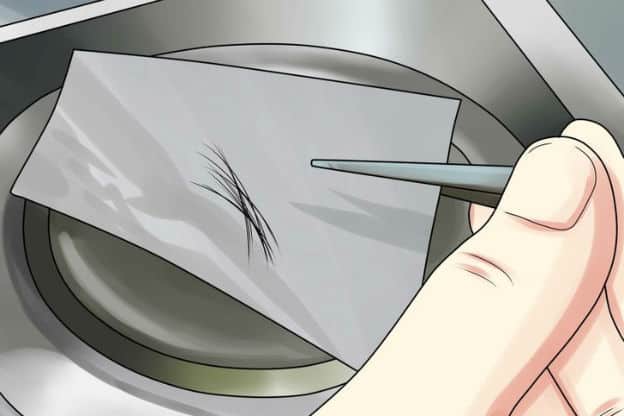Employee drug testing programs detect drug users and serve to deter drug use in the workplace. Since employers first began drug testing employees in the 1980s, drug use among workers subject to testing has steadily declined.
Unless a company is federally regulated (e.g. by the U.S. DOT), employers have a fair amount of discretion (subject to some state and local laws), in how they conduct employee drug testing.
So why do employers drug test?
Employee Turnover
Substance abuse among workers can increase employee turnover. A 2007 SAMHSA study indicates that workers who report having three or more jobs in the previous five years are about twice as likely to be current or past year users of illegal drugs as those who have had two or fewer jobs.
Studies estimate the cost of recruiting and training replacement workers at one-third of a worker’s annual salary, with additional costs to the employer making it more like 50% of the worker’s annual salary. Workers with an Substance Use Disorder are 40% more likely to report having more than one employer in the previous year.
In jobs with high average salaries, (executives, managers, finance), each worker with an untreated substance use disorder costs an employer more than $14,000 a year.
To Identify Employees Who Have Substance Problems
Employers who drug test new hires reduce the possibility of employing people with substance abuse problems. Illicit drug users can cause harm to a business in many ways. Likewise, many employers who drug test existing employees view it as an employee health issue and offer help to those who are found with a dependence issue.
According to the National Safety Council, almost 9% of working adults in the U.S. have a substance use disorder, including 6.7% with an alcohol use disorder and 1.6% with a cannabis use disorder, dominated by workers in industries like construction. Other industries with easy access to alcohol, like entertainment and food service, also have higher rates. But where safety is a concern, employers need to be vigilant.
To Protect the Company and Business
Some state and federal laws specifically require certain employers to maintain drug-free workplaces. Transportation employees whose jobs fall under the regulations of the U.S. Department of Transportation are required to be in drug testing programs. And some government contracts require that employers maintain a drug-free workplace. AND there are 11 states that offer a discount on worker’s compensation premiums if employers establish a compliant drug-free workplace program.
And employers who are interested in protecting themselves from safety issues, lawsuits, workers comp claims and such, will implement drug testing programs to stay ahead of potential problems related to employee drug use.
To Maintain Safety for All Employees
Employers are required to provide a safe place to work for ALL employees. Individuals who use illicit drugs are less productive and more likely to be involved in an accident than non-drug-using co-workers. They negatively affect team morale and productivity. Substance-abusing workers are more likely to injure a co-worker than themselves. Employee alcohol and drug abuse poses a higher risk of danger to the safety of everyone in the workplace.
About Employee Drug Testing
Pre-employment drug testing is the most common reason, but there are many other very good reasons employers drug test.
- Pre-employment testing is usually performed after a conditional offer of employment. Pre-employment drug testing is a litmus test of sorts. It protects employers from the negative impacts of hiring drug users, not only through test testing itself, but it also deters many from seeking jobs where passing a drug test is required, and many will seek a job elsewhere.
- Random drug testing acts as a deterrent to drug use. Using a computer-generated random selection process, existing employees are selected for unannounced drug testing. A true random selection process ensures that there is no bias and that all individuals have an equal chance to be selected.
- Periodic testing is not the same as random. It is typically scheduled and performed on current employees at regular times throughout the year. Many employers conduct annual or semi-annual periodic testing, and in many cases, combine it with an annual physical.
- Post-accident testing, sometimes called “post-incident” testing, is conducted following a workplace accident. Normally a company drug policy will define what type of accident requires a post-accident drug (or drug and alcohol) test. Some examples may include fatalities, injuries that require medical assistance, traffic citations, or damage to a vehicle or property over a specific dollar amount. OSHA also has some things to say on this matter. Post-accident testing is used to determine whether drugs could have been a factor in the incident.
- Reasonable suspicion testing, sometimes called “for-cause” testing, is conducted when supervisors have evidence or reasonable cause to suspect an employee of drug use. Under DOT guidelines, a trained supervisor must make a determination based on “specific,contemporaneous, articulable observations concerning the appearance, behavior, speech or body odors” of the employee.
- Return-to-duty testing is for employees who have previously tested positive or otherwise violated a company’s drug and alcohol policy. For federally-mandated, safety-sensitive workers, return-to-duty drug testing is a single test that is performed at a scheduled time, typically following the completion of a drug abatement program. Many non-regulated employers who offer second chance agreements do similarly.
- Follow-up testings for employees who have previously tested positive or otherwise violated a company’s drug and alcohol policy. Follow-up testing is performed after an initial return-to-duty test.
Interested in Employee Drug Testing?
"*" indicates required fields
Drug-free Workplace
We refer to any drug and alcohol testing program that is non-mandated as a “drug-free workplace” program.
In drug and alcohol testing programs performed under company authority, you have a lot more choices:
- You can test for more drugs.
- You can use hair drug testing, oral fluid drug testing or urine drug testing.
- You can use instant or rapid tests.
Most companies still model their drug and alcohol testing programs after DOT protocol, as it is established, tested and defensible.
Similar to a DOT drug and alcohol testing programs, a well-planned drug-free workplace program includes the following:
- Written drug policy
- Supervisor training
- Employee education
- Access to EAP (Employee Assistance Provider)
- Drug testing
While DOT programs require random drug testing, random drug testing is optional for non-DOT.
DOT Program and Consortium
Companies that are required to test under U.S. Department of Transportation (DOT) are usually familiar with the drug and alcohol testing process. If it’s new to you, please ask. There is a lot to know.
If you are audited by the DOT, and found not to be in compliance, fines can be thousands of dollars. DOT auditors will check your records to make sure you have all 5 of the following covered:
- Written Policy
- Supervisor Training
- Employee Education
- Access to SAP
- Drug and alcohol testing
- FMCSA Clearinghouse
We can help with all of those.
Alcohol testing
We use Department of Transportation (DOT) approved Evidentiary Breath Test devices for all alcohol tests. Results are court-admissible if required.
EtG Alcohol Testing

Ethyl glucuronide (EtG) is a direct metabolite of ethanol alcohol and can be used to detect recent alcohol consumption, even after the ethanol alcohol is no longer measurable (usually up to 80 hours after ethanol alcohol has been metabolized by the body). This urine test is used for folks who are required to abstain from alcohol.
Hair Alcohol Testing

A hair alcohol test can detect alcohol consumption for a 90 day period. The longer the hair sample, the larger the detection window (up to a year, in certain cases).
Substance Abuse Costs Businesses Huge!
